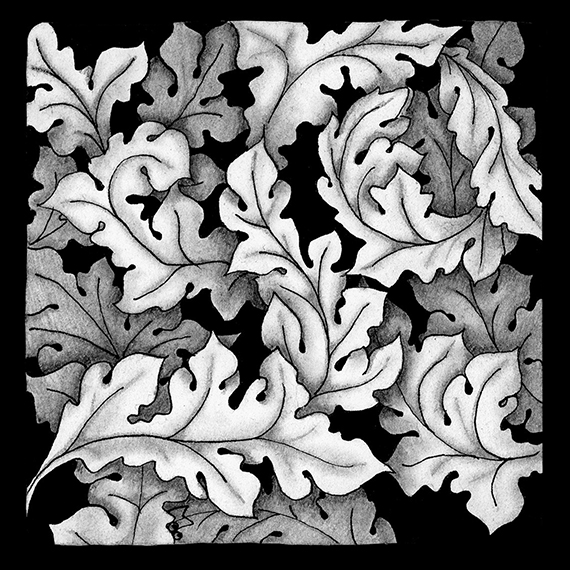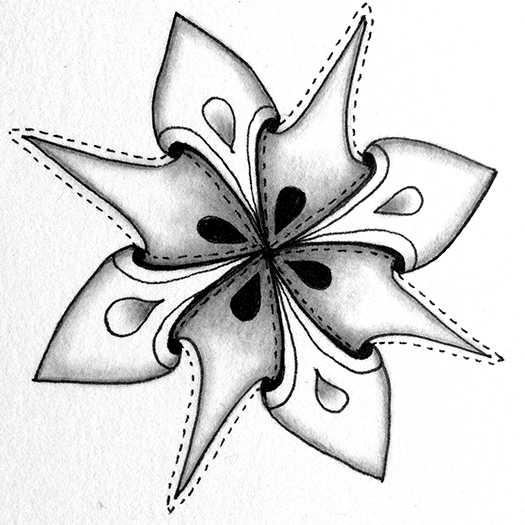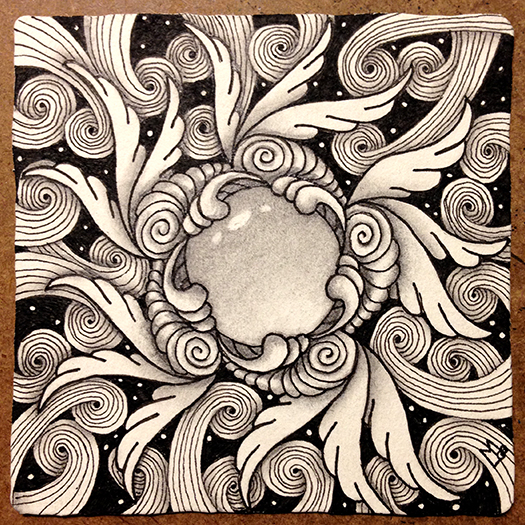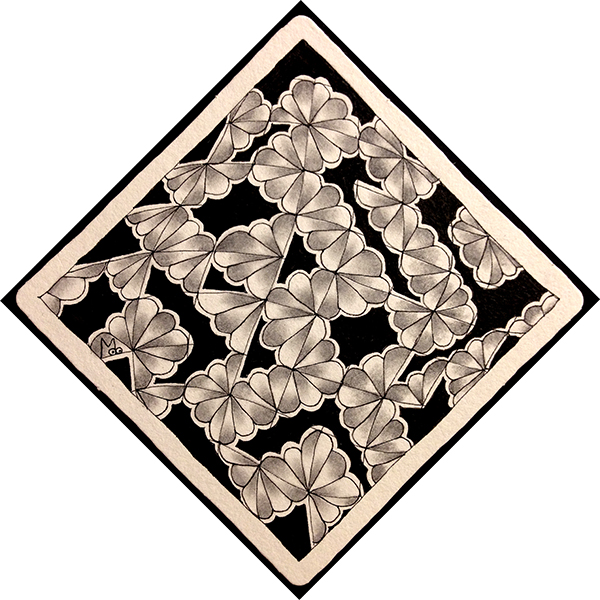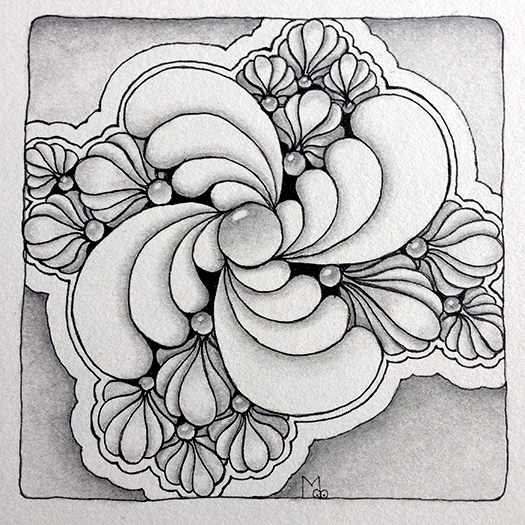
It’s been a while since I’ve posted to this blog. First I was getting ready to teach a class at Tangle U (a continuing education conference for CZTs) and then on the way back from that I caught that horrible cold that was going around and was out of it for around 6 weeks. Since then I’ve been trying to get caught up on things. I’m glad to be able to post again.
This week I’m getting back to posting my Square One: Purely Zentangle focus tile. This week’s focus is Showgirl by Vicki Bassett. Step-outs for this tangle can be found here.
I actually drew three tiles for this focus, each one with something to share with you. In the first tile I used Showgirl along with a Tangle called Fluxecho that I introduced at Tangle U.

Fluxecho got it’s name from the fact that it looks a bit like Flux with additional lines that echo the original shape. It starts out with an orb and two opposing “S” curves so that it looks like an exclamation point! It grows very organically and tucks together nicely to form a grouping. Here are the step-outs and some variations.

The next tile I did I decided to make some of Showgirl’s “feathers” have transparent centers by drawing an inner aura so the feather behind showed through. This came out looking a lot like Lupe by CZT Christina Vandervlist. While the end result looks very similar to Lupe the process for drawing is slightly different. Step Outs for Lupe can be found here if you’d like to compare the two methods.

Here’s how I created this look. First start out with a completed Showgirl figure.

Then Draw an inner aura around the central “feather”. This is the top layer.

Then, draw an inner aura around the “feather” that is the next layer behind,
making sure to continue it’s lines behind the first layer so that it shows through.
Continue this process of drawing inner auras, continuing the lines of each petal
behind the lines of the “feather” that is on top of it.

The final result will look like this.

Finally, I wanted to draw a tile using Showgirl and last weeks Square One focus tangle, Puffin.

It turned out looking like Puffin had been appliqued on top of Showgirl out of some translucent material so that Showgirl partly showed through. To achieve this effect I just continued the lines of showgirl and filled them in with pencil, then continued the lines in pen when they emerged from behind Puffin. The perf lines around the edges of Puffin added to the applique effect.
I didn’t start out to draw three tiles that demonstrated different things but I like them all so I’m glad I could share them with you. You just never know where Zentangle is going to take you. As always if you see something in this post that you would like to try in your own work, please feel free to do so.
Blessings,
Lynn

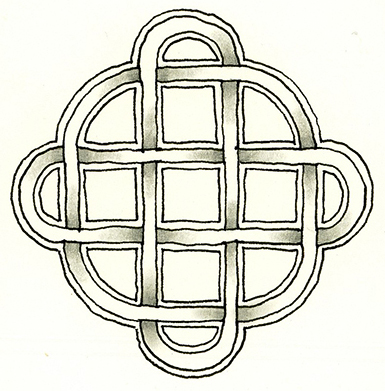




 Then add rounded triangle and semi circle shapes as shown.
Then add rounded triangle and semi circle shapes as shown.















































